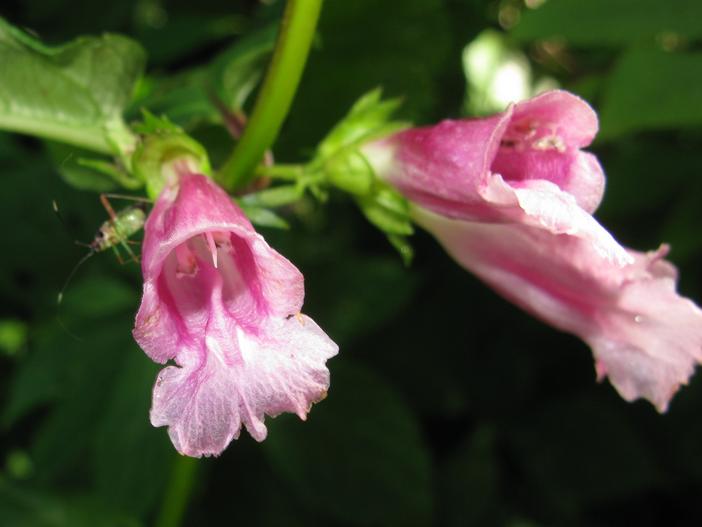Japanese Turtlehead
(Chelonopsis moschata)
Japanese Turtlehead (Chelonopsis moschata)
/
/

Qwert1234
CC BY-SA 3.0
Image By:
Qwert1234
Recorded By:
Copyright:
CC BY-SA 3.0
Copyright Notice:
Photo by: Qwert1234 | License Type: CC BY-SA 3.0 | License URL: https://creativecommons.org/licenses/by-sa/3.0 | Uploader: Qwert1234 | Publisher: Wikipedia Commons









Estimated Native Range
Summary
Chelonopsis moschata, commonly known as Japanese Turtlehead, is a deciduous perennial herb that is native to the moist, shaded forest floors and woodland edges of Japan. It typically grows to a height and width of 1-3 feet (0.3-0.9 meters), forming clumps of upright stems with toothed, ovate leaves. The plant is noted for its unique, tubular flowers that resemble a turtle’s head, which bloom in shades of purple and pink from late summer to early fall, adding a splash of color to the garden when many other plants have finished flowering.
Japanese Turtlehead is valued for its distinctive flowers and its ability to thrive in shady conditions, making it an excellent choice for woodland gardens, shaded borders, or as a naturalizing plant in moist areas. It prefers consistently moist, well-drained soils rich in organic matter and can tolerate part shade to full shade. While it requires low amounts of water once established, it benefits from additional watering during prolonged dry spells. This plant is generally low-maintenance, but it can be susceptible to slugs and snails, which may damage the foliage. It is not known to be invasive and does not have aggressive roots, making it a safe choice for most garden settings.CC BY-SA 4.0
Japanese Turtlehead is valued for its distinctive flowers and its ability to thrive in shady conditions, making it an excellent choice for woodland gardens, shaded borders, or as a naturalizing plant in moist areas. It prefers consistently moist, well-drained soils rich in organic matter and can tolerate part shade to full shade. While it requires low amounts of water once established, it benefits from additional watering during prolonged dry spells. This plant is generally low-maintenance, but it can be susceptible to slugs and snails, which may damage the foliage. It is not known to be invasive and does not have aggressive roots, making it a safe choice for most garden settings.CC BY-SA 4.0
Plant Description
- Plant Type: Herb
- Height: 1-3 feet
- Width: 1-3 feet
- Growth Rate: Moderate
- Flower Color: Purple, Pink
- Flowering Season: Summer, Fall
- Leaf Retention: Deciduous
Growth Requirements
- Sun: Full Sun, Part Shade
- Water: Low
- Drainage: Medium
Common Uses
Drought Tolerant, Low Maintenance
Natural Habitat
Moist, shaded forest floors and woodland edges in Japan
Other Names
Common Names:
Scientific Names: , Chelonopsis moschata, Chelonopsis subglabra, Chelonopsis moschata var. subglabra,
GBIF Accepted Name: Chelonopsis moschata Miq.